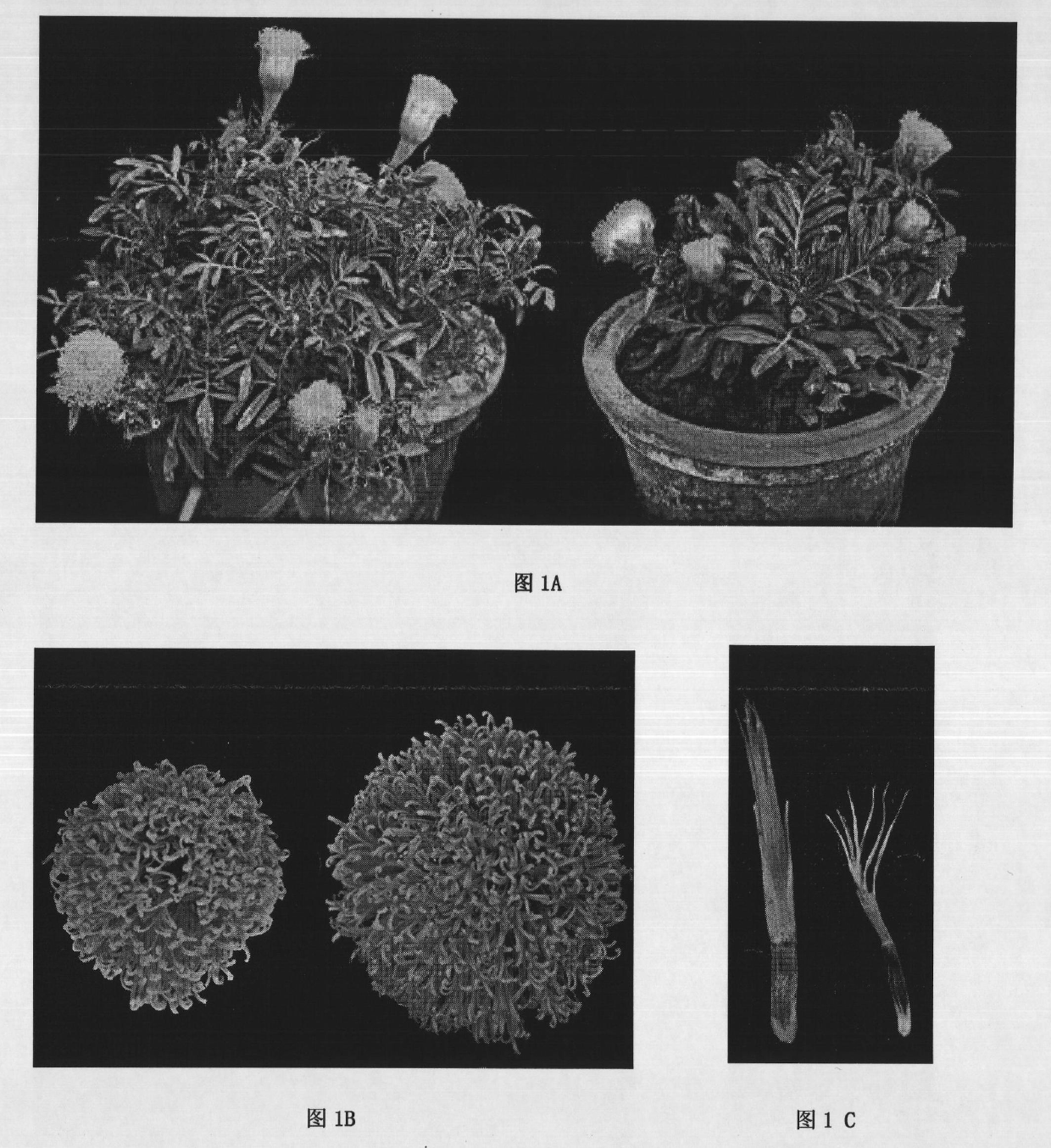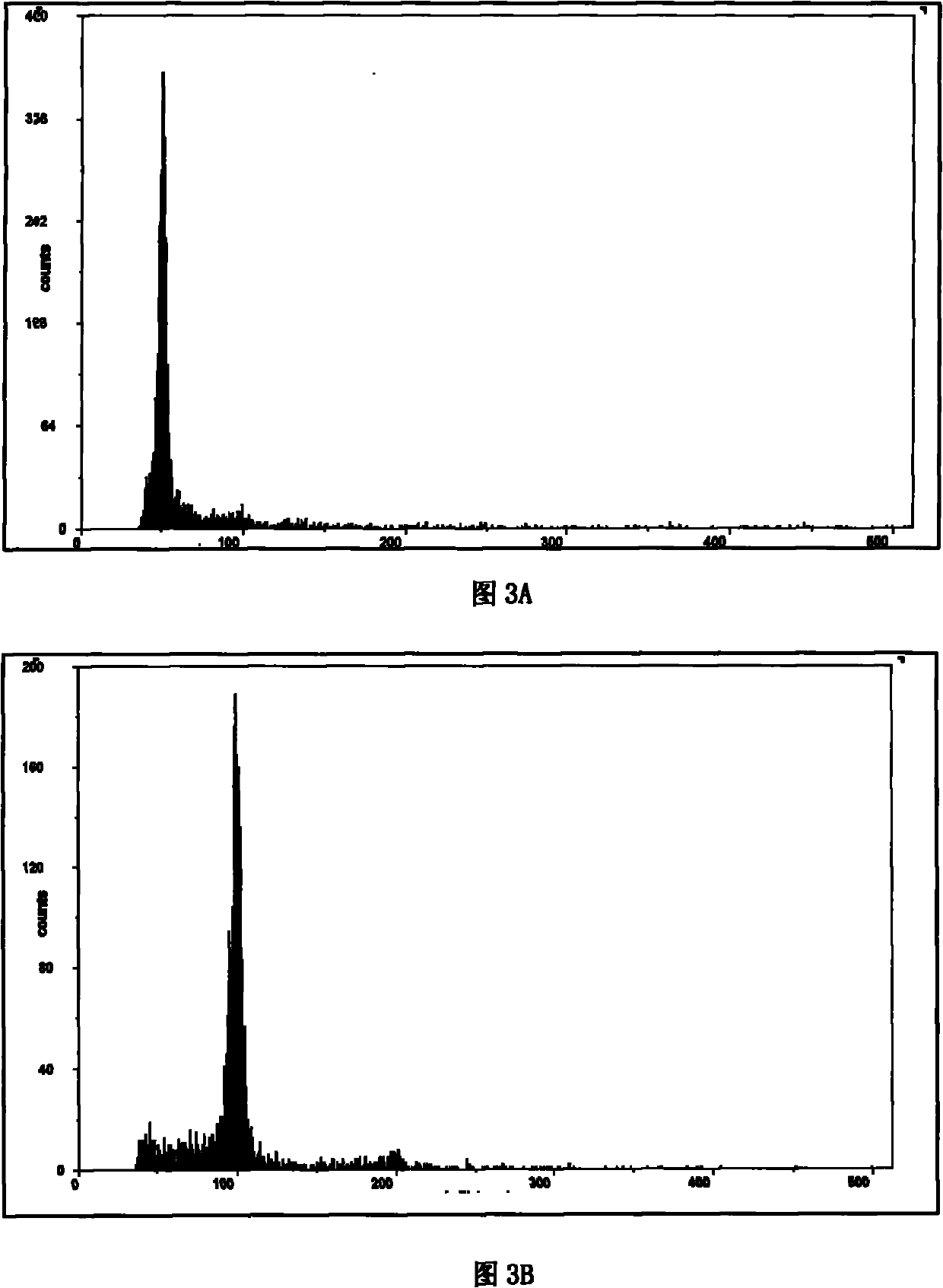Method for doubly improving marigold genotype by utilizing chromosomes
A chromosome doubling and marigold technology, applied in the direction of plant genetic improvement, botanical equipment and methods, biochemical equipment and methods, etc., can solve problems such as inability to obtain tetraploid plants, severe vitrification of differentiated seedlings, and complicated operation processes. , to achieve the effect of easy control of environmental conditions, high repeatability, and high doubling efficiency
- Summary
- Abstract
- Description
- Claims
- Application Information
AI Technical Summary
Problems solved by technology
Method used
Image
Examples
Embodiment 1
[0033] In 2004, the applicant found a marigold male sterile material in the horticultural flower test field of Huazhong Agricultural University. Through multi-generation directional selection, a marigold male sterile dual-purpose line with stable traits was obtained, named M525AB (He Yanhong, et al., Cytological and mapping analysis of a novel male sterile type resulting from spontaneous floral organ homeotic conversion in marigold (Tagetes erecta L.). Molecular Breeding, 2009, DOI: 10.1007 / s11032-009-9372-x. See Springerlink database: http: / / springer.lib.tsinghua.edu.cn / content / 6218771h8502152j / ?p=3a1acfbf8d8442e49f0238dcb63b9da0&pi=0). In the autumn of 2008, the seeds of the male sterile line M525AB of marigold were harvested and stored dry and sealed for use in the next year.
[0034] The marigold doubling method proceeds as follows:
[0035] ①Pregermination treatment: In the first ten days of March, the full seeds of the male sterile line M525AB of marigold were selected ...
Embodiment 2
[0043] This embodiment adopts the shoot tip titration colchicine-induced doubling method, and proceeds according to the following steps:
[0044] ①Pregermination: In early March, select the plump seeds of the male sterile line M525AB of marigold, put them in a petri dish lined with filter paper moistened with water, and cultivate them at 25°C. Seed to the hole tray, the hole tray cultivation substrate is the same as embodiment 1.
[0045] ②Colchicine doubling treatment: As soon as the two cotyledons of the marigold are unfolded, immediately wrap the growth point of the seedlings with absorbent cotton balls, and use colchicine solution with a concentration of 0.025% to 0.4% every 4 hours for stem tip titration, continuous treatment For 2 days, during the treatment process, the top of the plug tray was covered with a sunshade net to keep the cotton balls moist.
[0046] ③Rinse with running water to remove the treatment: After 2 days, remove the cotton ball and rinse the growing...
PUM
 Login to View More
Login to View More Abstract
Description
Claims
Application Information
 Login to View More
Login to View More - R&D
- Intellectual Property
- Life Sciences
- Materials
- Tech Scout
- Unparalleled Data Quality
- Higher Quality Content
- 60% Fewer Hallucinations
Browse by: Latest US Patents, China's latest patents, Technical Efficacy Thesaurus, Application Domain, Technology Topic, Popular Technical Reports.
© 2025 PatSnap. All rights reserved.Legal|Privacy policy|Modern Slavery Act Transparency Statement|Sitemap|About US| Contact US: help@patsnap.com



